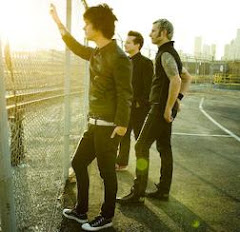
the full title of david hajdu's new book is "the ten-cent plague: the great comic-book scare and how it changed america" (emphasis in the title). in an interesting coincidence, the unusual length the subtitle mirrors the length of the book. harping on the title a bit longer, the added emphasis to the conjunction "and" left me wondering not how, but rather, did america really change as a result of the comic book scare?
it's more than evident hajdu did exhaustive research for his book. i especially enjoyed the historical vignettes he reports of 1940's america. the post-world war two efforts to round up "evil comics" for burning was eye-opening! yes, it's hard to believe in the shadow of nazi germany's atrocities (heralded by book burning in the 1930's), middle america didn't grasp the sad irony of proudly burning comic books to purge society of their perceived evils. completely unsupported by any evidence, the biggest fear of these communities was having their children become juvenile delinquents after reading vivid true crime comics!
hajdu does a great job presenting the repeating cycles of fear that reignited the crusades against comic books. the initial revulsion with the depiction of crime and criminals kicked off the first efforts to ban comics. but then as that issue receded, concern mounted about the loose values depicted in "romance" comics and, later, the gruesome images found in "horror" comics. finally, the irreverent "comedy" of "mad" comic (the precursor to mad magazine) was just too much to witness for some. the outright "disrespect of traditional values" inked across the pages of "humor" comics, triggered yet another suppression effort!
but this long, sad string of events, spread out over more than a decade, is hardly constitutes a "great comic book scare." even the high (low?) -water mark of senate hearings, ad hoc legislative efforts by some states and localities, and the self-imposed comic code adopted to self-regulate the industry (and forestall legislation), just doesn't come together as a unified effort to repeal the first amendment and impose censorship across the comic book industry.
maybe i've missed the obvious, but 1950's america witnessed the mccarthy hearings, the korean war and it's aftermath, and the steep rise cold war tension (now that both the soviets and americans made atomic weapons, they raced to outproduce and each other). this list can go on and include, for instance, the rise of the beat generation - an arguably direct response of youth in the face of all that madness. but this is not to diminish the evil of any form of censorship, which was what all the efforts to rid communities of comic books essentially boiled down to. instead, it seeks frame the context of these efforts in the america of the 1950s.
while i enjoyed reading it, i though the book went on too long and reflected the essentially unconnected nature of the reported activities. while hajdu tried to weave the disparate efforts to suppress comic books across the country into part of a greater censorship movement, these incidents were discrete events - not part of a greater movement. the impact of his narrative could have been just as, if not more, powerful told with a 100 fewer pages. it took more than 300 pages to reach the passage of state laws in 1955 that "crippled" the industry! then just 30 pages more wrap up the book - and presumably detail the impact on america!
all that said, i did enjoy the "ten-cent plague," and would recommend it to anyone interested in censorship and it's disastrous consequences. but the title promises too much, and delivers something else. it's a well-researched and well-reported look at a very unflattering aspect of society which remained untold until hajdu excavated it for our benefit.
Tuesday, May 27, 2008
"the ten-cent plague" book review
Labels:
book review
Subscribe to:
Post Comments (Atom)




















6 comments:
I actually picked this book up at Borders on Sunday and skimmed through it. As a fan of 1960's comics more than 1950's-1960's politics, thanks for the heads up. The great thing about summer for me is no school, which increases training and reading time. Good review though! I havent picked out a September marathon yet..stupid gas better be down by then!
thanks john! the book had a strange send-off. the epilogue was a three page vignette of modern day robert crumb living in france!
couple of good september marathons here in nys if you're up for a road trip!
I can't believe there is another runner who loves Dostoievsky!
he is too smart, especialy crime and punishment.
I know this comment has nothing to do with this book, but I don't really understand how blogs work.
this blog is really good. I hope I will find all the info I need for training for my first ultra.
I wonder if there is a relationship between long distance running and dostoievsky.
thanks for visting lilichka! what sort of running do you do now?
Thanks for the review. Although I haven't read the book, I would suggest another, Michael Chabon's "The Amazing Adventures of Kavalier and Clay" to anyone remotely piqued by comics or hugely interested in literature.
Today's novel is Paul Auster's "Travel in the Scriptorium." It's short and very postmodern. If you aren't familier with Auster, read "The New York Trilogy."
Jimbozoom
thanks jimbo! both those books have bklyn connections :) chabon's character is in bklyn, auster is from bklyn :D
kavalier and clay could easily be the fictionalized version of "ten-cent plague."
Post a Comment